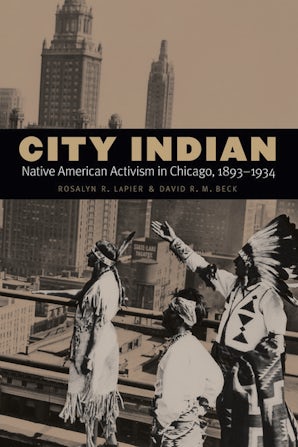"City Indian is a most important addition to the literature on Native activism, the history of Indigenous representation, and urban history."—Coll Thrush, Michigan Historical Review
“LaPier and Beck reconstruct a history of Indigenous people both transcending and maneuvering within that two-worlds theme, and not cowering at modernity or drifting off into the sunset. . . . Scholars of not only the vital and maturing field of Indian urbanization, but also activism, education, labor, and modern Indigeneity, should consult this volume and add a copy to their shelves.”—Douglas K. Miller, Journal of American Studies
"For anyone interested in Chicagoans—all Chicagoans—this book tells a tale that explains how the non-Indian city treated Native Americans. And, by extension, how it has treated anyone on the edges, whether African Americans, Hispanics, non-heterosexuals, women, the poor, and the unconventional."—Patrick T. Reardon, Third Coast Review
“A substantial contribution to emerging scholarship on Native Americans and cities that provides fresh insight and helps us understand the motivations, strategies, tensions, controversies, and triumphs that have characterized the work and lives of local and national Indian leaders.”—Nicolas G. Rosenthal, author of Reimagining Indian Country: Native American Migration and Identity in Twentieth-Century Los Angeles
"Rosalyn LaPier and David R.M. Beck . . . add to a growing literature on urban Indians' experiences with their fine monograph City Indian."—Paul C. Rosier, Anthropos
"A welcome addition to the robust field of studies of Indian in urban places."—Sherry L. Smith, South Dakota History
“City Indian covers an important and timely topic. This history of Indians in urban settings is currently under considerable and probing reconsideration. With this book Rosalyn LaPier and David Beck have shown how Native peoples in Chicago have determined their destinies.”—Brian Hosmer, H. G. Barnard Chair of Western American History and coeditor of Tribal Worlds: Critical Studies in the History of American Indian Nation Building
